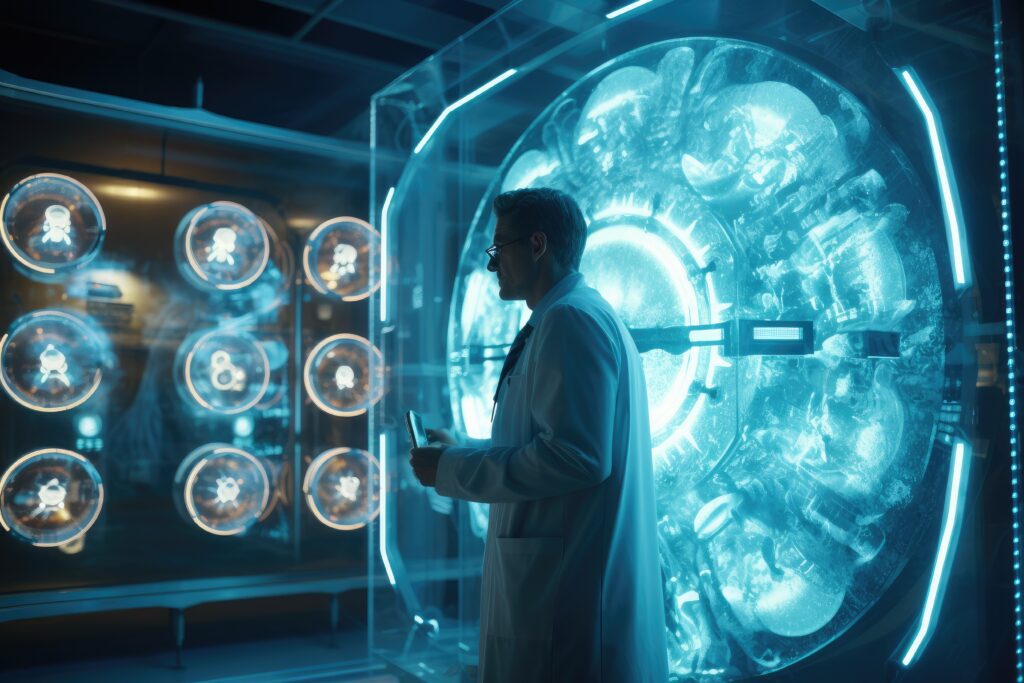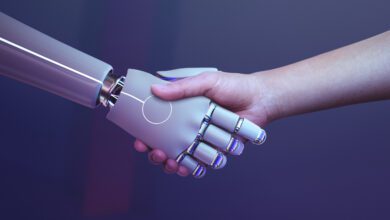
AI and Robotics: New Ways to See Inside with Ultrasound
For 60 years, ultrasound has been important in medical imaging. It lets us see inside the body without surgery. Twenty years ago, we got the first remote-controlled ultrasound machine. Now, we’re going even further with AI and robotics.
Professor Nassir Navab from Technical University of Munich (TUM) says, “We want a robot with AI. It should understand ultrasound physics, analyze the body, and help doctors make decisions.” He leads the Chair of Computer-Aided Procedures & Augmented Reality at TUM, bringing experts in AI, computer vision, medicine, and robotics together.
AI and Robotics: Advancing Ultrasound Imaging
Professor Navab and his team’s research is in respected journals like Annual Review of Control, Robotics, and Autonomous Systems and Medical Image Analysis. They made a new robot system for ultrasound tests. This robot can do tests without a doctor. It has a robot arm with an ultrasound probe. It can look at places like a patient’s arm or stomach on its own.

Key Features of the Robotic System:
- Three-D Imaging: This system makes 3D images, not just 2D ones. It shows more details inside the body.
- Autonomous Diagnosis: The device can show inside vessels by itself. It can also see things like blood flow. And it can spot problems like narrow vessels on its own.
- Routine Examinations and Surgical Assistance: The machine can do tasks alone. It also helps in surgeries. In spinal operations, it gives live pictures to surgeons. This lets them work without holding the machine.
Real-World Applications
This tech can help in faraway places. Picture a health cabin in a pharmacy or on an island with this machine. It can give great ultrasound checks without needing special medical staff. This makes healthcare easier to get. It could also help on ships or in space stations where doctors are scarce.
Building Trust with Patients
Adding robots to healthcare needs trust from patients. Professor Navab and his team know this. They’re finding ways to make machines and people work well together. Before the robot moves, it shows a clear animation of what it will do during the exam. Simple actions like a “high five” can help patients get used to the robot, making sure they feel safe and comfortable.
Ph.D. Scholar Felix Dülmer explains, “These measures are supposed to make it clean that the system is aware the surroundings and may react to motion, making sure that the gadget poses no danger.”
The Future of Medical Imaging
As human beings emerge as greater cushty the use of technology to reveal their fitness—consider smartwatches measuring pulse, body temperature, and blood strain—it is likely they’ll also be given robotic systems for duties like ultrasound tests.

Professor Navab believes that the future of ultrasound imaging is vibrant and that humans will quick adapt to those advanced systems. “People are already measuring their pulse, body temperature, and blood stress with their smartwatch or other virtual applications,” he says. “They will truely be open to having ultrasound examinations executed with the assist of robotic systems.
Conclusion
The integration of AI and robotics into ultrasound imaging represents a considerable development in medical technology. From habitual take a look at-americato complicated surgical procedures, those self sufficient systems promise to revolutionize how we perform and interpret ultrasound checks. As this technology becomes more sizeable, it’s going to now not only make healthcare more efficient however additionally greater on hand to humans round the world.
Ready to stay in advance within the area of medical innovation? Keep a watch on how AI and robotics keep to transform healthcare, and don’t pass over out on the destiny of ultrasound imaging.
Source: Technical University of Munich



